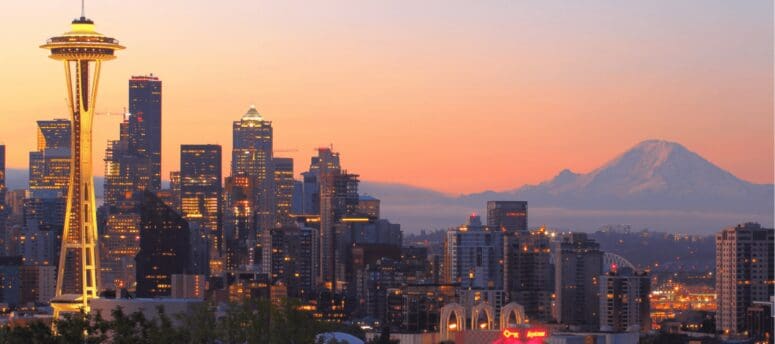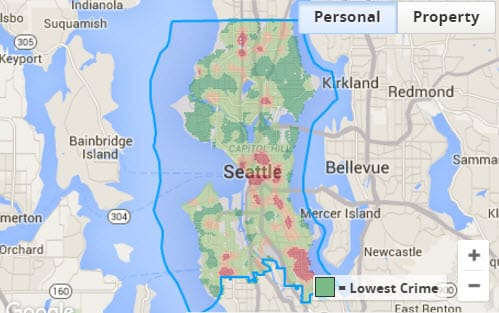Moving to Seattle? Here’s Literally Everything You Need to Know
- Published on
-
 Michelle Nickolaisen Contributing AuthorClose
Michelle Nickolaisen Contributing AuthorClose Michelle Nickolaisen Contributing Author
Michelle Nickolaisen Contributing AuthorMichelle holds a B.A. in Fashion Design and Marketing from Missouri State University. She has over 10 years of experience writing on everything from real estate to small business and technology. Her work has been featured in Entrepreneur, Fast Company, Intuit QuickBooks, MediaBistro, and other publications.
You’re moving to Seattle, whether it’s across the state or across the country, and you have no idea where to get started. What’s the weather like? Where should you live, shop, and eat? Can you get by with just a bike, or do you need a car to survive?
Before you have your pre-move panic attack, calm down.
We got in touch with local bloggers, dug into all the stats, combed through Yelp, and generally plumbed the depths of the internet, to bring you everything you could possibly want to know about:
- Seattle weather
- Seattle’s city culture
- Cost of living in Seattle
- Job market and popular industries in Seattle
- The neighborhoods of Seattle
- The cost of car ownership in Seattle
- Seattle public transit
- Biking and walking in Seattle
- Seattle real estate
- Actually moving to Seattle
- …and everything else you wanted to know about Seattle, that doesn’t fit into any of the other categories
Lifestyle: What’s living in Seattle actually like?
Weather in Seattle
Being so close to the Pacific, it’s no surprise that Seattle’s climate is classified as oceanic, with cool, wet winters and warm, relatively dry summers.
The warmest months are August, July, and June, with average highs ranging from 69-73F, and the coldest months are January, February, and December, with average lows ranging from 36-38F.
You’ve probably heard about the famous Seattle rains, and while it doesn’t necessarily rain all day, every day, there are 152 days/year with rainfall, on average. The amount of rain varies year to year, with no strong trends one way or the other over the last 25 years:

The rainiest months are December, January, and November, averaging 5-5.43 inches of rainfall.
Keeping this in mind, when you move to Seattle, you’ll want to waterproof your suede shoes ahead of time, and invest in a good raincoat and maybe even a pair of galoshes for the really rainy days.
Luckily, even though it’s relatively damp most of the year, the cooler temperatures mean that mold growth isn’t usually a problem as long as the property is well-ventilated and maintained.
You’ll still want to make sure all mold testing guidelines are being followed, though, and keep an eye out for the telltale signs of mold.
Seattle’s City Culture
Seattle ranks among the best cities in the country for single people, but there’s plenty of family-friendly neighborhoods as well. View Ridge, Laurelhurst, and Ravenna are ranked by the Seattle Sun Times as the three most family-friendly neighborhoods.
Blogger SeattleAnne has put together a list of 51 things you can do around the city with your children, and Red Tricycle also has a calendar of family-friendly events.
Seattle is also known for being especially LGBT friendly, being on par with San Francisco for the amount of people who identify as gay, lesbian, or bisexual and the amount of same-sex households in the city. For new Seattle residents, that means you can expect a welcoming city, whatever the makeup of your family is like.
Cultural influences and activities in Seattle include:
Performing arts
Seattle has a lot to offer in the performing arts, with the Seattle Symphony Orchestra being one of the most recorded orchestras in the world (and over a hundred years old). The Seattle Opera and Pacific Northwest Ballet are also well-regarded, and the Pacific Northwest Ballet school ranks as one of the top three ballet schools in the U.S.
The list goes on, with summer and winter chamber music festivals and more.
There’s also a healthy amount of independent theaters and showings of independent films, including the 24-day Seattle International Film Festival (the largest film festival in the United States) which typically takes place from mid-May to mid-June each year.
Other popular Seattle festivals include the Fremont Fair, Seafair Week, and Bumbershoot, although that’s not the whole list — check out the complete list of festivals at the Visit Seattle site for more information.
Music
The city is considered the birthplace of grunge music, with Nirvana, Soundgarden, Alice in Chains, and Pearl Jam all hailing from Seattle. Alt rock bands ranging from Modest Mouse to Foo Fighters also call it home. If music is your thing, you’ll be able to find shows easily.
Slam poetry
A little more niche than the previous two categories, but worth mentioning: Seattle is the home to two national poetry champs and two international poetry champs, and has hosted the national Poetry Slam Tournament. There’s also the biennial Seattle Poetry Festival.
Coffee culture
It may not have the historical relevance of Les Deux Magots on St. Germain-des-Pres, but Seattle’s coffee culture has it’s own rich history that rivals any in the U.S. The world’s first Starbucks opened in Seattle in 1971 and today there are 2.5 coffee shops for every 1000 residents of the city.
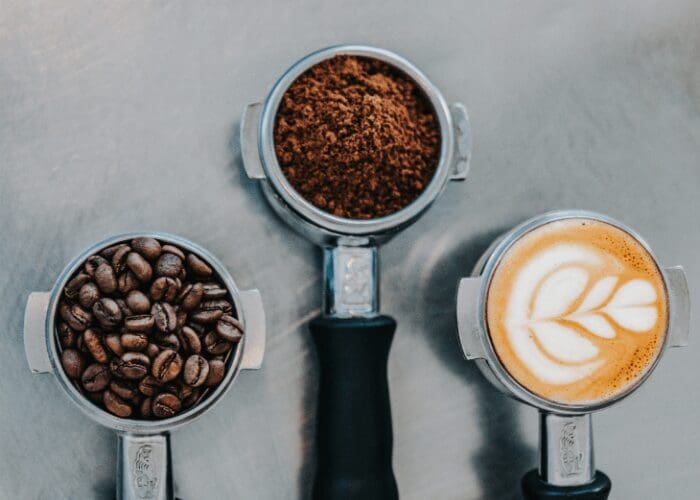
Well regarded cafes include Bauhaus Book & Coffee, Victrola Coffee, and the kid-friendly Cloud City.
The city’s focus on the arts means that Seattle has several excellent liberal arts schools, whether that’s something you’re looking at for you or for your child, and plenty of hip, funky neighborhoods to hang out in.
Museums
Seattle is home to several standout museums — in more ways than one. There’s the Seattle Art Museum and the Burke Museum of Natural History and Culture, of course. The Seattle Art Museum hosts collections of both classic and modern art across a variety of mediums, ranging from textile to sculpture to paint, year-round.
The Burke Museum has cultural exhibits, like those highlighting the native Pacific cultures, but also has exhibits featuring dinosaurs and aspects of the natural world (both present and past).
On the less standard side of things, there’s also the Giant Shoe Museum, located at the Pike Place Market, which is exactly what it sounds like: an odd little museum with a collection that was owned by a man who was obsessed with larger-than-average shoes. Slightly offbeat but much more educational is the EMP Museum, with exhibits ranging from sci-fi to video games to Jimi Hendrix.
The EMP’s focus on pop culture (and the ideas and risks that create it) makes it a great museum choice for those that tend to be bored with more traditional museum fare. They also have classes and workshops for children of all ages, ranging from music therapy camp to teen artist workshops.
Back on the more standard side of museums, history buffs will love the Museum of History and Industry. If you’re into art, aside from the aforementioned art museum, you should also look at the Frye Art Museum. The Pacific Science Center is family-friendly and includes life-size robot dinosaurs.
For more ideas, the Visit Seattle site has a full list of upcoming museum events, and Thrillist has a list of offbeat and unusual museums to check out.
This variety in museums across Seattle means that you’ll always have something interesting to see in your time — and that any children in your family will have educational and entertaining activities you can take them to on the weekends.
Many of these museums host classes, programs, and events for children and adults alike — a great way to start meeting your new Seattle neighbors!
Shopping and style
Despite the rain potentially limiting your wardrobe choices (or any preconceptions of grungy hipsters!), Seattle has its fair share of stylish people.
The It’s My Darlin’ street style blog captures the city’s natives in their various outfits, so you know what type of style you’ll be surrounded by.
There are plenty of other Seattle style blogs to draw your inspiration from, too:
- Coco+Kelley has plenty of interior design inspiration for your new Seattle residence
- Sydney Loves Fashion will keep you up to date on all the local sidewalk sales and sample sales
- Fresh Jess, who also does event roundups (so you can immediately hop into Seattle culture!)
When it comes to getting your hands on your very own stylish threads, different areas in Seattle tend to be better for different types of shopping:
- Downtown has high-end retail such as Tiffany & Co, along with the multi-level flagship Nordstrom store
- Ballard is full of hip, independent boutiques like Camelion Design and crafty shops like Drygoods Design
- Belltown is the place to go for art galleries and high-end consignment shops
- And the suburbs have plenty of outlet malls, the most comprehensive of which is probably the Seattle Premium Outlets in Tulalip, where you can get a deal on name-brand clothing.
If you’re looking for a specific type of shop, make sure to check out the SeattleMag shopping guide.
The Emerald Palate has a neighborhood-by-neighborhood shopping guide to get you up to speed on where to shop near your new home.
Outdoor activities and fitness
No matter what you’re into, you’ll be able to find something fun to do in Seattle, whether it’s:
- Doing indoor bouldering at the Seattle Bouldering Project or Stone Gardens
- Exploring the trails of the 534-acre Discovery Park
- Cycling the Burke-Gilman trail
- Going on a kayak tour
- Taking a yoga class at any of the many popular yoga studios in Seattle
All told, it’s no wonder that Seattle regularly ranks in the top ten fittest cities in the US. If living a fit lifestyle is important to you, you’ll find plenty of ways to keep up with that lifestyle in Seattle.
Seattle is Pet Friendly Too!
If your household includes a furry friend, you’re in luck: the city is renowned for being dog-friendly, and you can take your dog with you on public transportation to make it to some of the choice hiking spots.
If you’re an experienced hiker, local dog blog You Did What With Your Weiner? has a list of five challenging dog-friendly hikes around Seattle that you can explore, and if you’re more towards the beginner-friendly end of the spectrum, there’s another list of six lesser-known hikes to check out.
Finally, if you want to find something else to do with your pooch, the Seattle Dog Spot site has an event calendar full of activities (both outdoors and in).

Cost of Living in Seattle
One of the potential downsides of Seattle is that, like many big cities, it’s not cheap. This cost of living calculator at Payscale can help you prepare for a potential increase in cost and see what level of salary you’d need to maintain your standard of living.
Overall, the cost of living in Seattle is 24% higher than the national average, but it’s still lower than several major cities (including San Francisco and New York). Wages in Seattle are on a slight upswing, being up 3.6% in Q1 2016, and the average salary in Seattle is $67,263.
Seattle’s Booming Job Market
Many of Seattle’s jobs are in tech industries, with Amazon (among others) being based in Seattle. According to Payscale, the most popular industries in Seattle are:
- Software/Software-as-a-Service (SaaS) development
- Retail
- eCommerce
- IT services
- Consulting
If you’re relocating to Seattle without a job waiting for you, the odds are in your favor.
As of Q3 2015, according to the Bureau of Labor Statistics, the unemployment rate in Seattle was 3.3%, compared to a national rate of 5.5%. Unemployment has been on a downward trend since 2010.
Last but not least, WalletHub ranked Seattle 19th on its list of best places to find a job in 2016 (out of the 150 biggest cities in the U.S.). There are multiple resources available to find a new job in Seattle including the Seattle City Employment Center, LinkedIn, and of course, Craiglist Seattle.
Neighborhoods: Where to live, eat, and shop in Seattle
The city government breaks Seattle down into thirteen major districts:
- Ballard
- Central Area
- Delridge
- Downtown
- East
- Greater Duwamish
- Lake Union
- Magnolia/Queen Anne
- North
- Northeast
- Northwest
- Southeast
- Southwest
Each of these districts is represented by District Councils that serve as vehicles for local to address concerns and upcoming activities. In each of these districts, there are smaller neighborhoods — for example, the Capitol Hill and Fremont neighborhoods are in the Lake Union district.
Seattle Ranks as One of the Safest Cities in the US

Overall, AreaVibes ranks Seattle neighborhoods very favorably, with only four having an “average” rank: South Park, International District, Brighton, and Rainier Beach. These four neighborhoods have higher than average crime rates, ranging from 6% higher than Seattle’s average (International District) to 26% higher (South Park).
If you’re looking for an especially safe Seattle suburb to settle down in, Sammamish is a good choice. It’s about a 30-minute drive to the heart of Seattle, and it’s been ranked by sources varying from Forbes to CNN as exceptionally safe and friendly.
Seattle’s Education System
If you have children or are planning on having them soon, you’ll want to know where the best schools are in Seattle.
As ranked by Niche, taking into account factors like state test scores, college readiness, SAT/ACT scores, graduation rates, and student/parent reviews, the top five school districts in the Seattle metro area are:
- Bellevue School District
- Bainbridge Island School District
- Mercer Island School District
- Lake Washington School District
- Issaquah School District
In 2016, Great Schools gave the city of Seattle a score of 9 out of 10, with particular strong ratings among elementary schools, many of which received a perfect 10 out of 10 including:
- Bryant Elementary School
- Coe Elementary School
- Hay Elementary School
- John Stanford International Elementary School
- Loyal Heights Elementary School
- North Beach Elementary School
- View Ridge Elementary School
- Wedgwood Elementary School
- West Woodland Elementary School
- Thurgood Marshall Elementary School
- Whittier Elementary School
If you’re thinking about going back to school, Seattle is a great place to do it.
When it comes to higher education, the University of Washington was ranked as the 16th best public university in the world by U.S. News in 2016.
UoW (or “u-dub” as it’s referred to by the locals) is also particularly strong in Computer Science (where it ranked #11 nationally) and Primary Care Medicine (where it ranked #1).
Seattle Central Community College was recognized by Time as the community college of the year.
The most popular Seattle neighborhoods
In no particular order, here are a few popular Seattle neighborhoods you might like to move into:
Beacon Hill
Beacon Hill is known for being kid-friendly, with multiple parks and playgrounds and a library. It’s close to the light rail and is bike-friendly, with mostly flat terrain and good bike lanes.
One of the more interesting things about Beacon Hill is the seven-acre food forest, created with the goal to “design, plant and grow an edible urban forest garden that inspires our community to gather together, grow our own food and rehabilitate our local ecosystem.”
According to the Seattle Met, buyers tend to be lured to Beacon Hill by bungalows, midcentury homes, and newly built townhomes (which often come with Built Green certification).
Capitol Hill
Capitol Hill is extremely pedestrian and public-transit friendly, with a walk score of 91, a transit score of 73, and a bike score of 69. It’s also a great neighborhood for foodies, with 82 Zagat-rated restaurants.
The foodie-friendliness and walkability comes at a price, though: the cost of living in Capitol Hill is 5% higher than Seattle’s average, and the median home value is 13% higher than Seattle’s average.
Pioneer Square
Aside from downtown, Pioneer Square is the most walkable neighborhood in Seattle, with a walk score of 98 and a transit score of 100. If you move there, your neighbors will be mostly renters.
That’s not surprising, given all the new apartments that have recently gone up, and the median home value of $712,834 in the neighborhood.
Columbia City or International District
If you want to experience one of the most diverse neighborhoods in the United States, Columbia City and International District have plenty to offer.
Both have a variety of international cuisines available ranging from Ethiopian to Mediterranean, over 60 languages are spoken in Columbia City, and Kobe Terrace Park in International District showcases a four-ton stone lantern from Seattle’s Japanese sister city.
The median home price and rent in both neighborhoods is lower than the Seattle average, with International District being slightly more affordable than Columbia City.
Georgetown
Speaking of affordability, Georgetown (not to be confused with its namesake located in Washington, D.C.) ranks as one of the most affordable neighborhoods in Seattle, along with being one of the most artistic.
AreaVibes ranks the cost of living as 12% lower than the Seattle average, and the median home price is about 32% lower than the Seattle average.
The neighborhood is known for its industrial-chic vibe, with plenty of warehouses turned into refurbished lofts. It is a little less pedestrian-friendly than Seattle as a whole, with a walk score of 68 and a transit score of 46 (compared to Seattle’s average of 73 and 57).
Ballard
Ballard has recently had an influx of new apartment and condo buildings go up, drawing new people to its small-town-in-a-big-city feel. Cost of living and average home price are about average for Seattle, but Ballard is especially pedestrian-friendly, with a walk score of 88.
It’s also known for its year-round farmers market, which the 7×7 blog names as the best one in Seattle.
Transit: Everything you need to know to get around in Seattle
Car ownership
Although Seattle was #8 on the 2000 census for cities with the most households without a car, the majority of Seattleites (a little less than 2/3) do own automobilescars.
Fees & Insurance
As far as car registration and tax costs go, you’re looking at:
- Car insurance rates that are higher than the national average, ranging from $1,453 to $1,639:
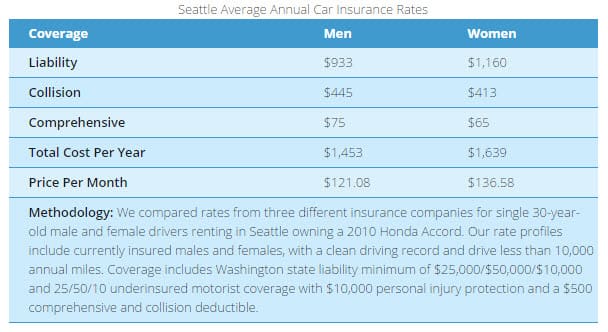
- Basic fees of $38.75 plus a weight-based fee ranging from $10-30
- The Transportation Benefit District (TBD) fee, which is $80 in Seattle
- Regional Transit Authority (RTA) taxes, which are .3% of the depreciated value of your car
- Possible additional fees for a special design license plate ($30) or an electric car ($100)
All of that adds up to average annual cost of $1,714.75, or roughly $143/month, before factoring in any parking fees or for gas.
Gas Prices
As far as those prices go, gas recently hit an eighteen-month low in February, but are back on an upswing, with prices at about .40/gallon higher than the national average:

If you’re moving from another state, you’ll have 30 days to get your driver’s license, which you need to do before registering your vehicles.
If you’re over the age of 18 and have a valid driver’s license, the process is easy — you’ll just pay $54 (or $72 for an enhanced driver’s license, which can be used as a passport alternative at U.S. land and sea border crossings).
If your license is expired, you’ll have to retake the written and driving tests, so keep your license current!
When it comes to getting around Seattle, you can always rely on the old standbys of Google Maps and Waze, but the WSDOT app can give you Seattle-specific info that includes live traffic cams, wait times at the Canadian border, and more.
The Pay By Phone app lets you pay for parking from your phone — no more looking for the closest meter.
Public transportation
Seattle’s public transportation is thoughtfully designed, regularly ranking well in lists across the country:
In fact, Seattle recently became the second most bus-reliant metropolis in America, with one out of five residents using the metro to get to work. Normal adult fares range from $2.50-3.25, with $8 unlimited regional day passes, and unlimited monthly passes ranging from $90-117.
Buses aren’t your only option in Seattle, though. There are several RapidRide lines, multiple rail lines and a streetcar line that connect various neighborhoods and suburbs, and even a water taxi to connect Vashon Island and West Seattle to downtown.
If you’re waiting on your bus and want real-time arrival information, the free OneBusAway app has you covered.
Biking and walking around Seattle
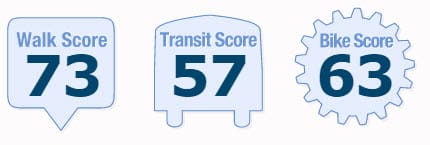
According to WalkScore.com, Seattle is “rapidly becoming a world-class walkable city,” with a walk score of 73. Ranked eighth in the U.S. for walkability, the most pedestrian-friendly neighborhoods are downtown, Pioneer Square, Belltown, and First Hill.
When it comes to bikes, Seattle was ranked the 13th most bikeable city in the U.S. in 2015. In order of bike-friendliness, the top 10 most bike-friendly neighborhoods, followed by their bike score, in Seattle are:
- University District (86)
- Central District (86)
- Atlantic (84)
- Capitol Hill (82)
- Wallingford (82)
- South Lake Union (81)
- Belltown (80)
- Fremont (78)
- Green Lake (77)
- Portage Bay (77)
At the other end of the spectrum, the three least bike-friendly neighborhoods in Seattle are Rainier View, Fauntleroy, and North Beach-Blue Ridge.
For all the bike-related news and events in Seattle, you can check out the Seattle Bike Blog, (naturally!).
If you’re having trouble mapping your bike routes, both Commute Seattle and the Seattle city government have bike maps to help you out. There’s also Bike Friendly Business which helps you find Seattle businesses that support biking.
Seattle’s Real Estate Market: What to expect when buying a home in Seattle
As you might have noticed, homes in Seattle aren’t a small investment, which means you need to gather as much data as you can to be a prepared homebuyer. Overall, the citywide median home price (across all residential properties) is $508,000, which is about $320,000 higher than the national median and about $228,000 higher than the state median.
According to our data, these agents are within the top 2 – 4% of real estate agents in Seattle, and regularly get their clients deals below that median home price:
- Matt Warmack, who has ten years of experience and is a condo expert (ranking in the top 1% of agents in Seattle for condo sales)
- Joey McCune, a single-family homes expert and a condo expert with sixteen years of experience
- Ian Bell, an exclusive buyer’s agent with a five-star customer satisfaction ranking from Seattle Magazine for nine years running
- Jessica Livingston, a RE/MAX Hall of Fame recipient and recipient of the Seattle Magazine “Best in Client Satisfaction” award every year since 2006
- Jonn Mcynturff, another single-family homes expert
Seattle’s Housing Market
As of right now, the housing market in Seattle is on an upswing again, after previously peaking in 2007 and then bottoming out (with median prices of around $308,000) in 2013.
There’s a lot of demand, so aside from choosing a great agent from the list above, you need to be prepared to move quickly when it comes to a home — there’s not a lot of time for waffling.
Condos are especially competitive at the moment, with many of the tech workers that are relocating to Seattle looking for condos in very walkable neighborhoods, over houses in suburbs or less central neighborhoods.
The Nitty Gritty of Moving to Seattle:
Where to Get New Furniture, Find Unpacking Companies, and More
Given that you’re now well-versed in nearly every aspect of living in Seattle, it makes sense to cover the logistics of — you know — actually moving there.
Whether you need help unpacking or want to get new furniture, here are answers to all of your “just moved to Seattle” FAQs:

Where should I get my new furniture?
If you need a new bedroom set (or just a bed), Bedrooms & More in Northgate comes highly recommended — notably, they offer organic, chemical-free mattresses and adjustable beds.
McKinnon Furniture, in downtown Seattle, specializes in handmade wood pieces that are built to last.
Kasala Outlet can hook you up with modern furniture and home accessories (without breaking the bank).
If you want to go the Scandinavian assemble-it-yourself route, there’s an IKEA in Renton, a 20-minute drive from the heart of Seattle.
If you’re just browsing around and want to check out as many stores as possible, Tukwila (a suburb about fifteen minutes away) has plenty of options. In Seattle, the Industrial and University districts are popular places for furniture stores.
Whichever route you go, make sure to read this crash-course on furniture buying beforehand.
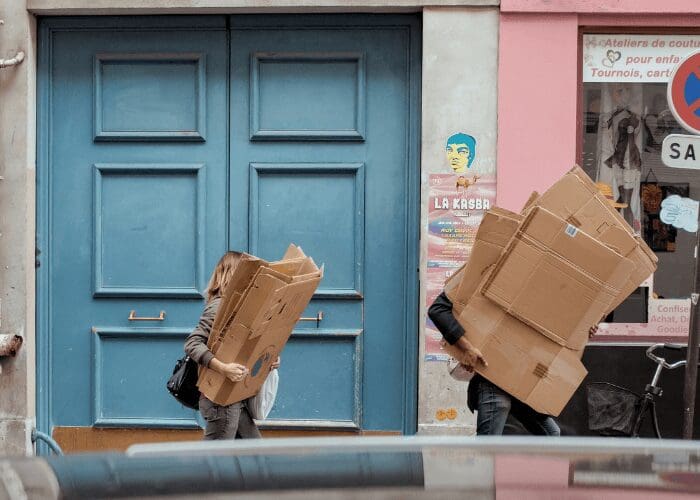
Who are the best unpacking companies?
Need a little help getting your new home set up and ready to go?
These highly-rated companies have your back:
-
- Top Shelf Organizing, offers home organization — but also help unpacking and organizing a new home
- Majestic Moving and Packing, can help you unpack (and doesn’t have a problem with short-notice moves)
- Hardcore Home Improvement, recognized by Thumbtack in 2015 & 2016 for having great customer reviews
- Puget Sound Moving and Storage handles all kinds of residential, commercial, and specialty moving. They’ve also got some great storage options if you are waiting on a new lease or can’t move into the new house just yet.
- Gentle Giant Moving Company, well-rated with several locations in other states — so if you’re moving from out of state and want a full-service company, this could be it
- The Organizing Experts, another team of home organizers that also offer unpacking services (and will break down boxes and take them away to recycle, to boot)
What if I need to make some quick repairs — where should I head for hardware supplies?
All of these hardware stores have a rating of 4 stars or above on Yelp, Google, or both:
- Pacific Supply Co in Capitol Hill was rated the best hardware store in Seattle by Seattle Weekly
- McLendons Hardware has a location in Seattle and one in Renton (one of the Seattle suburbs)
- Hardwick’s Hardware is a family-owned hardware store near the university
- Stoneway Hardware specializes in fasteners of all types

What if I need to remodel or have my new home painted?
If you’re in search of contractors, here’s a few well-rated options:
- Sound Painting does interior and exterior painting
- North Star Construction offers roof, fence, and deck installation and repair
- Lee’s General Landscaping can set up flower beds, install sod, clean your yard, and handle most other landscaping needs
- Seattle Construction does windows, roofing, and siding installation/replacement/maintenance
- Cobalt Construction specializes in remodeling
- Last but not least, you can always check out the Seattle Thumbtack marketplace to see reviews and get quotes for projects
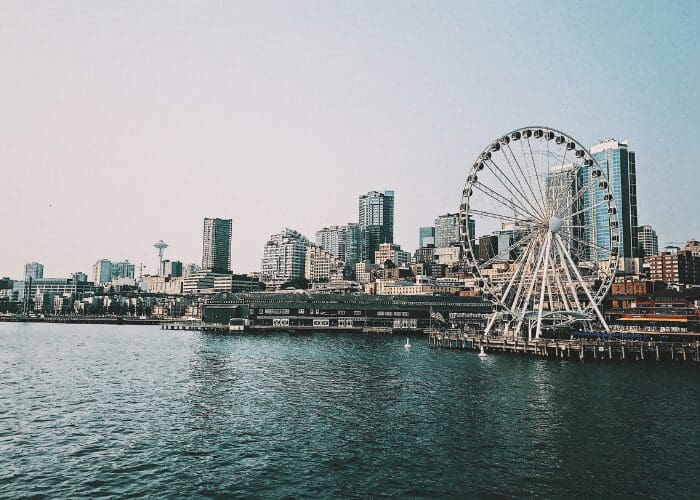
Everything else you might want to know about moving to Seattle
How to talk like a Seattle local
In any city, there are regional pronunciations and names that only locals know how to say. Here’s a breakdown of some of the Seattle-ite pronunciations that could give you away as a city newbie:
- Aberdeen: ABB-er-deen
- Bellevue: BEL-vyoo
- Bothell: BAW-thull (it rhymes with awful)
- Chehalis: sha-HAY-lis
- Chelan: sha-LAN
- Duwamish: doo-WAH-mish
- Enumclaw: EE-num-claw
- Issaquah: ISS-uh-kwah
- Mount Rainier: Mount Ray-NEER
- Mount Si: Mount SIGH
- Okanogan: oke-a-NOG-in
- Puget: PEW-jit
- Salish: SAY-lish
- Sammamish: suh-MAM-ish
- Sedro-Woolley: SEE-droh WOOL-ee
- Sehome: SEE-home
- Sequim: skwim (just the one syllable!)
- Yakima: YAK-uh-mah
For the full list, you can head to this post on Reddit.
The apps of Seattle
When you move someplace, it’s hard to find things to do right off the bat. Luckily, Seattle has you covered, with:
The Seattle Pipeline app, which has a map of happy hours around the city, plus lists of local events and opportunities to win tickets to them
The Seattle PlanIt app has a similar focus — with the added benefit of making it easy to coordinate plans with your friends or family from the app, even if they don’t have it on their phone
Or, for a super-specific focus, you can use the HopPlotter app to see breweries near you — a new-to-Seattle pub crawl, perhaps?
There are even startups that deliver fresh-made meals straight to your door. Munchery cooks up meals like whole grain pasta and kale pesto or chicken tikka masala every day, and then brings them to you on-demand or at your scheduled delivery time. Entrees are $7-10 and the delivery fee is $2.95.
Aside from Munchery, there’s the usual suspects to get your food delivered: Postmates, Grubhub, Eat24, and UberEATS.
If you want to go to your food instead, there’s the Seattle Food Truck site, or Zagat’s list of the most popular restaurants in Seattle.
The local Seattle sports teams: what you need to know
If you want to be able to keep up in conversation with a local sports buff, here’s what you’ll need to know about Seattle sports:
Seattle’s Football Scene:
The Seattle Seahawks are the local NFL team, which has been in three Super Bowls (including Super Bowl XLIX in 2015). Seahawks fans are referred to collectively as the “12th Man,” “12th Fan,” or “12s” and have twice set the Guinness World Record for loudest crowd at a sporting event. The Seahawks play at CenturyLink field located less than 2 miles from the central business district of Seattle.
Baseball in Seattle:
The local MLB team is the Seattle Mariners, which had a set a record for the American League in 2001, when they won 116 games. Unfortunately, that’s really the only record the Mariners have set — they’re also one of two MLB teams to have never played in a world series. The Mariners play in SafeCo field, a retractable stadium built in 1999 and located in Seattle’s SoDo neighborhood.
Seattle’s Soccer Club:
The men’s national soccer team is the Seattle Sounders, and the women’s team is the Seattle Reign. The Sounders have won the U.S. Open Cup three times in a row (2009-2011) and four times total (the fourth time being in 2014). The Reign is only a few years old (founded in 2013), but has already won the National Women’s Soccer League Shield twice (in 2014 and 2015).
Basketball in the Rainy City:
The local WNBA team is the Seattle Storm, which is known for having fun, fan-friendly games (one tradition is an all-kids dance squad, that leads a conga line on the court during time-outs), and has qualified for the WNBA playoffs eleven of its sixteen years playing in Seattle. Many Seattle basketball fans remain wistful that one day, their below SuperSonics (who departed for Oklahoma City in 2008) will return.
If you want to keep up with the latest Seattle sports news, you can use the official Sounders App or Seahawks app, or the ESPN Seattle app.
Whew.
That was a lot of information, but don’t you feel much better prepared for moving to Seattle now?
The last thing to do is to find an agent who can get you your dream home. We can help there, too — if you’ll head to our Seattle agents page, you’ll be able to get in touch with agents, see data about their track record, and more.
